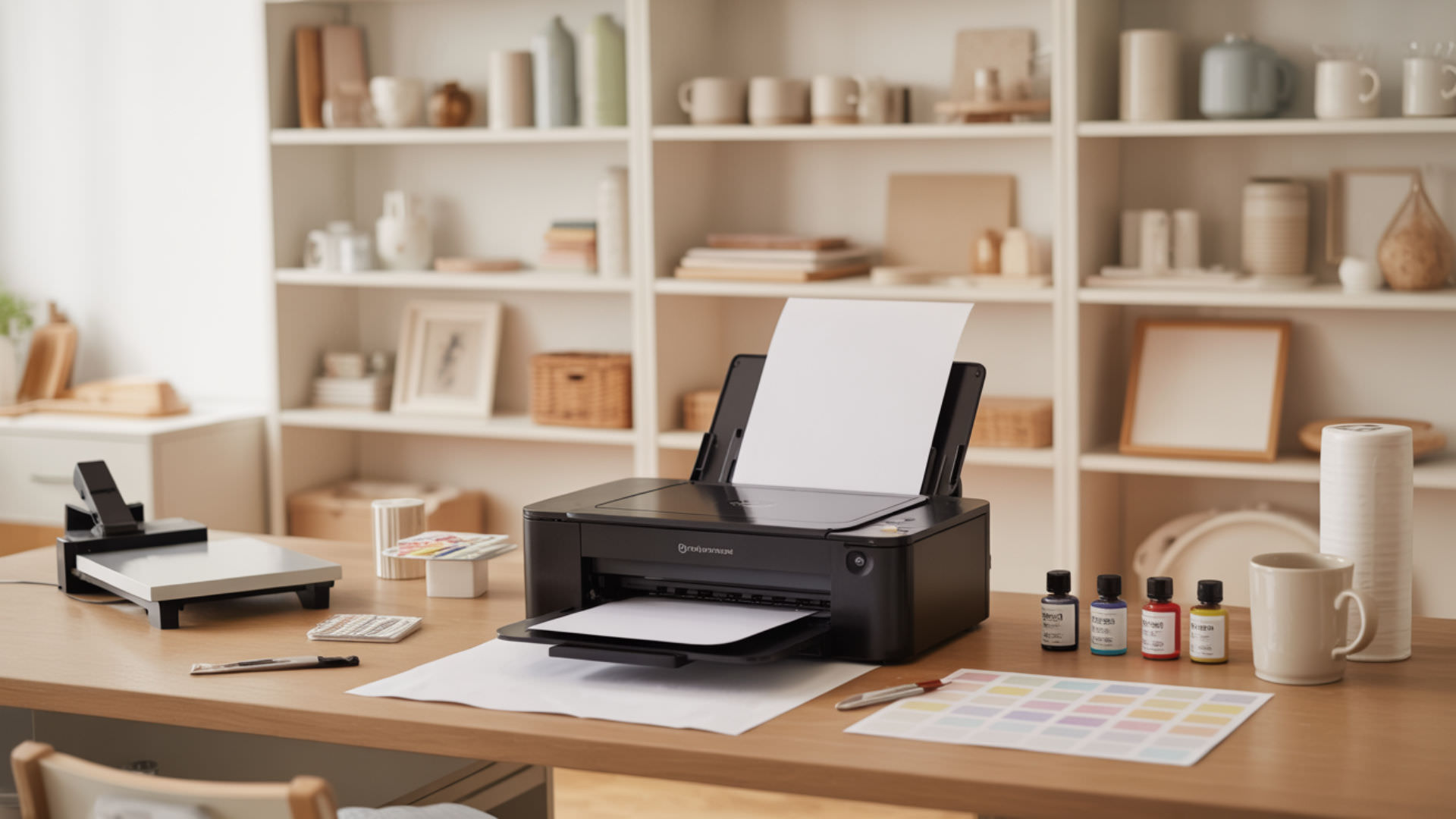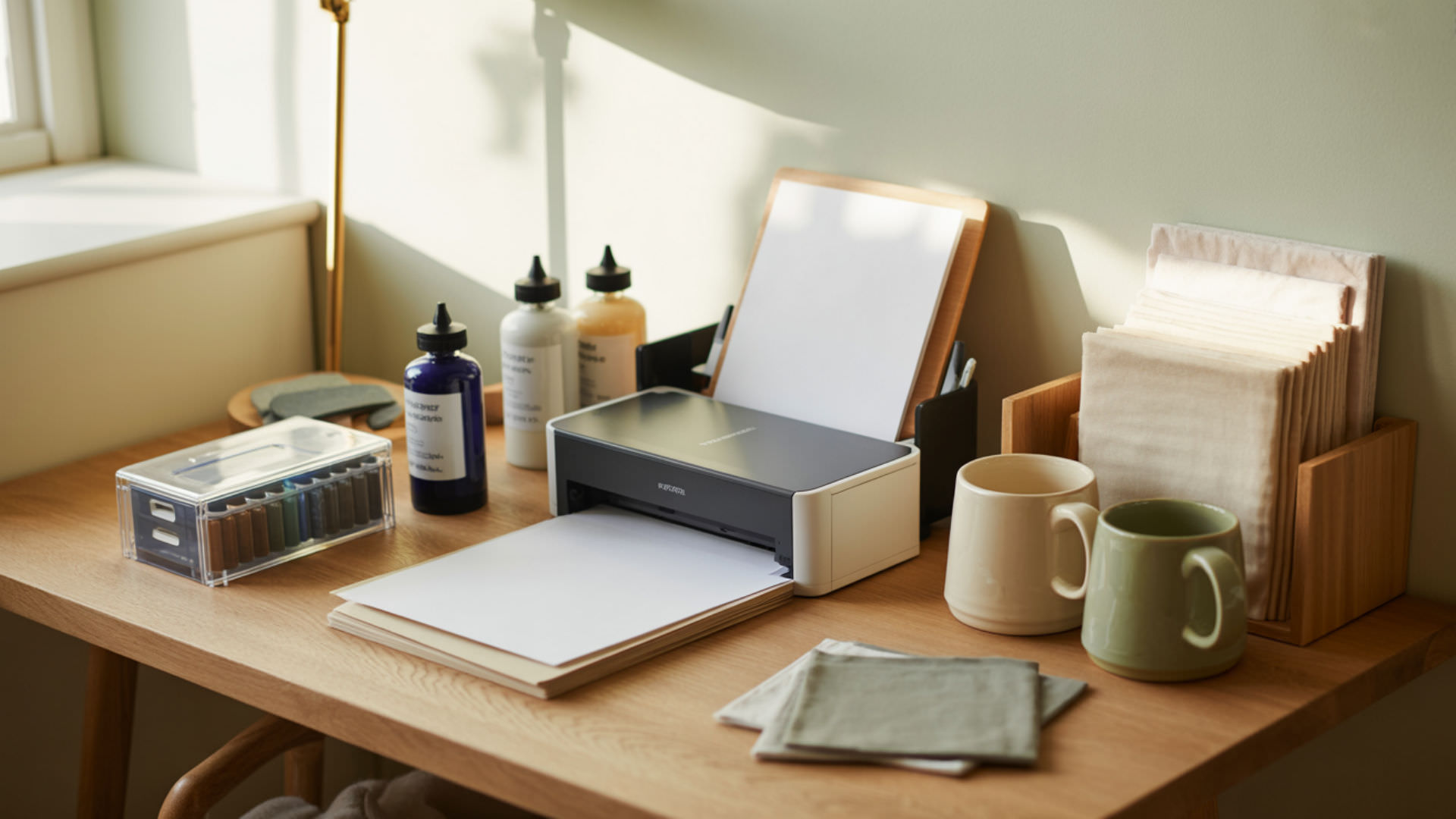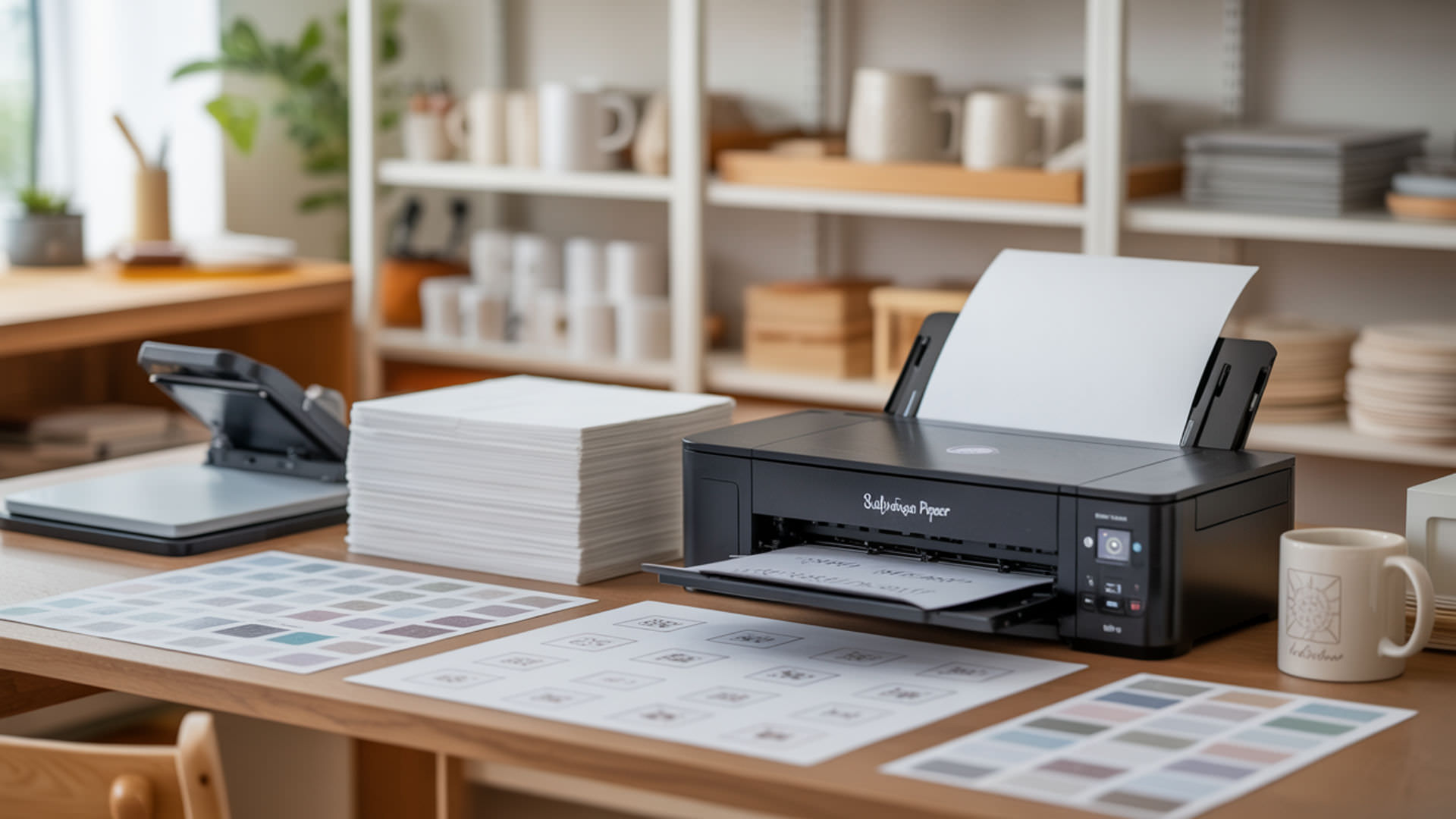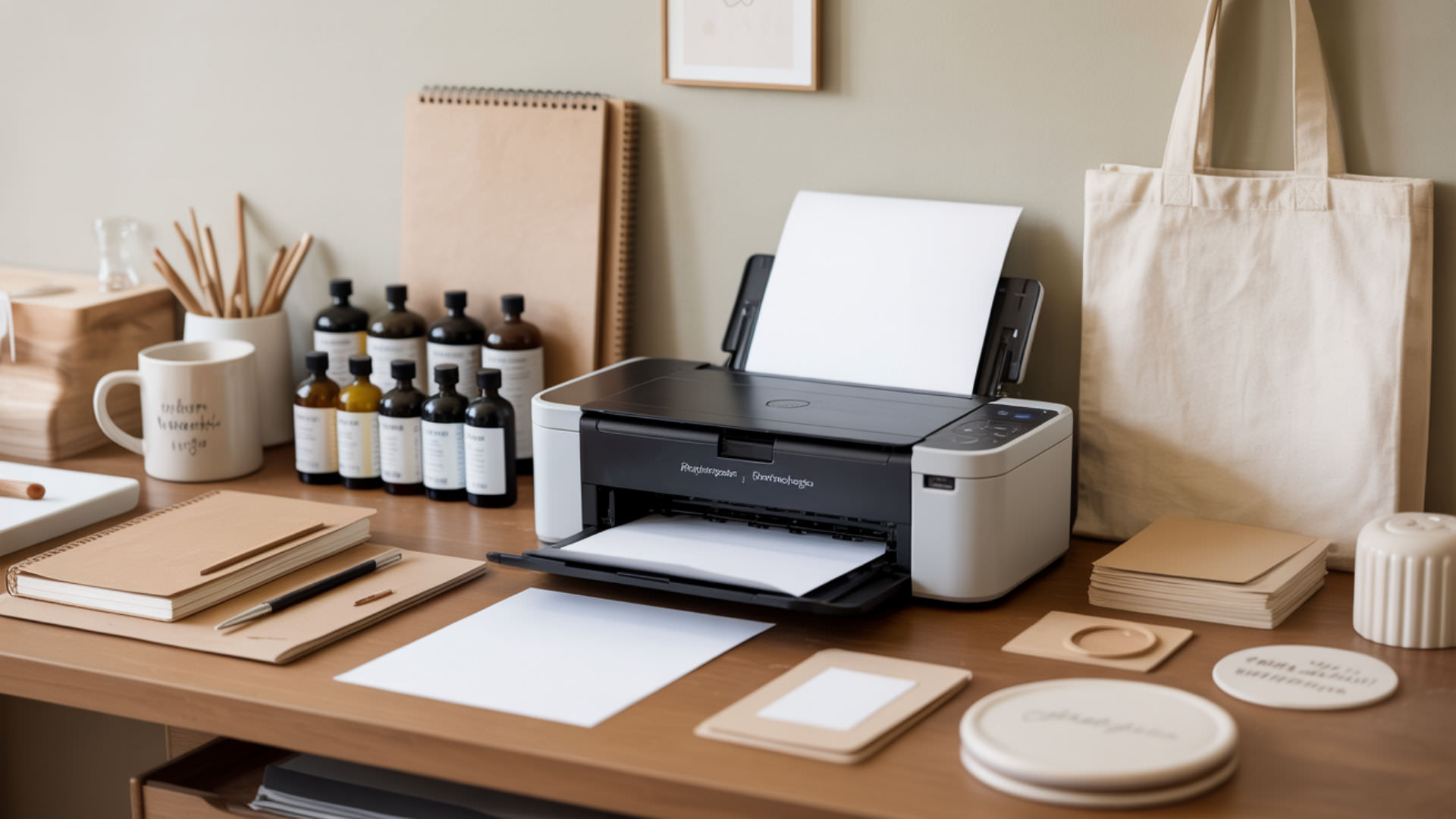Table of Contents
ToggleConverting an inkjet printer to sublimation requires matching the right printhead technology with sublimation ink CMYK formulations. Only printers with piezoelectric printheads can safely accept sublimation ink because piezo technology fires droplets without heat. Our complete guide to inkjet printer conversion explains which brands and models qualify for sublimation use. OEM dye or pigment ink must be entirely replaced before the conversion becomes valid.
Key Takeaways
- OEM dye or pigment ink must be fully purged from the printer before adding sublimation ink, or the conversion will fail with contaminated colors.
- Ink flushing removes residual OEM dye and pigment particles from internal tubing, dampers, and nozzles to prepare the system for sublimation chemistry.
- Printhead clogging is the most common failure when ink types mix or purging remains incomplete, often requiring expensive professional repair or printer replacement.
Which inkjet printers can be converted to sublimation?

Only inkjet printers with piezoelectric printheads can convert to sublimation. Piezo technology uses crystal vibration to fire ink droplets without heat, making it compatible with disperse dyes. Thermal inkjet heads use a heater resistor that vaporizes ink at extreme temperatures, destroying sublimation chemistry. Understanding why thermal inkjet head technology fails with sublimation ink prevents costly conversion mistakes. Only inkjet printers with piezoelectric printheads can convert to sublimation, because these systems fire ink droplets using mechanical pressure rather than heat, making them compatible with heat-sensitive disperse dyes. [1]
Can any inkjet printer be used for sublimation?
No, only inkjet printers with piezoelectric printheads work for sublimation. Epson models dominate the conversion market because they consistently use piezo technology across EcoTank and WorkForce lines. HP and Canon inkjet printers cannot convert because their thermal inkjet heads generate temperatures that damage sublimation ink during the firing process.
What type of inkjet printers are NOT compatible with sublimation?
Thermal inkjet printers from HP, Canon, and Lexmark cannot convert to sublimation. These printers use a heater resistor that superheats ink for a nanosecond, reaching temperatures near a million degrees centigrade. This extreme heat vaporizes sublimation dye before it can reach the paper, making thermal technology fundamentally incompatible with sublimation printing.
What is sublimation ink for inkjet printers?

Sublimation ink CMYK contains disperse dye particles that transform from solid to gas when heated during transfer. Unlike OEM dye or pigment ink designed for paper absorption, disperse dye bonds permanently to polyester fibers and polymer coatings. The EcoTank conversion process uses the same disperse dye chemistry that defines all sublimation printing.
Can inkjet printers use sublimation ink safely?
Yes, but only inkjet printers with piezoelectric printheads can use sublimation ink safely. The piezo mechanism fires droplets through crystal vibration at room temperature, preserving the disperse dye chemistry. Proper driver and print settings optimize ink delivery for sublimation transfer paper rather than standard office paper.
What happens if sublimation ink is used incorrectly?
Using sublimation ink in a thermal inkjet printer destroys both the ink and potentially the printhead. The heater resistor burns the disperse dye, causing immediate clogging and printhead failure. Mixing sublimation ink with residual OEM ink produces contaminated colors and accelerates nozzle blockages throughout the entire ink pathway.
How do you convert an inkjet printer to sublimation step-by-step?
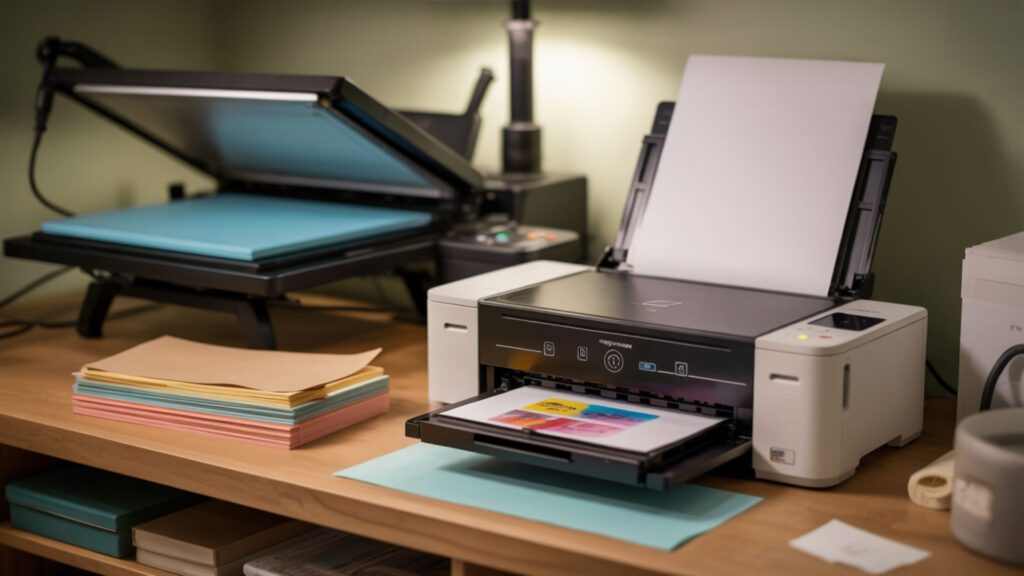
Converting a compatible inkjet printer requires complete removal of OEM ink before introducing sublimation ink. Follow these steps for successful conversion:
- Confirm your printer uses a piezoelectric printhead, not thermal.Perform ink flushing with cleaning solution to purge residual OEM ink.[2]
- Remove all OEM ink cartridges or drain ink tanks completely.
- Perform ink flushing with a cleaning solution to purge residual OEM ink.
- Fill cartridges or tanks with sublimation ink CMYK.
- Run an initial ink charge to prime the printhead with sublimation ink.
- Print a nozzle check to verify all channels fire correctly.
- Install ICC color profiles and configure print settings for sublimation output.
What software is needed for sublimation printing?
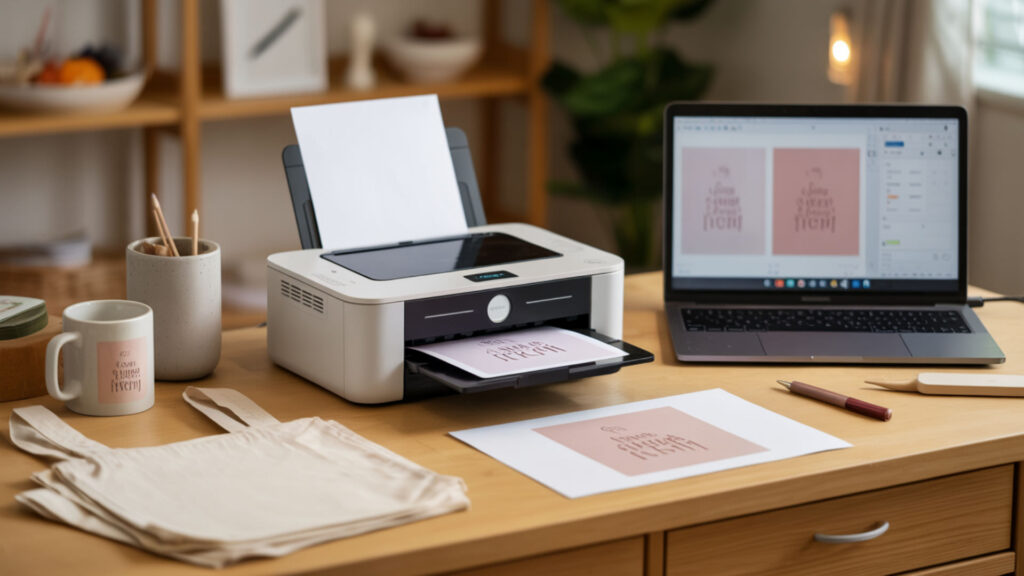
Sublimation printing requires design software that supports ICC profile for converted inkjet printers and color management workflow capabilities. Programs like CorelDRAW, Adobe Photoshop, and Silhouette Studio manage RGB to CMYK conversion for accurate output. Always enable the mirror image setting before printing transfers. Our ET-2400 review covers ICC profile for converted inkjet compatibility with popular design software.
Can basic heat tools be used for sublimation projects?
A household iron can work for small sublimation projects, but results remain inconsistent. Disperse dye requires precise heat between 380-400°F and firm pressure for 45-60 seconds. A dedicated heat press provides even temperature distribution that irons cannot match. Uneven heat causes incomplete transfers with faded or blotchy areas.
Ready to Convert Your Inkjet Printer?
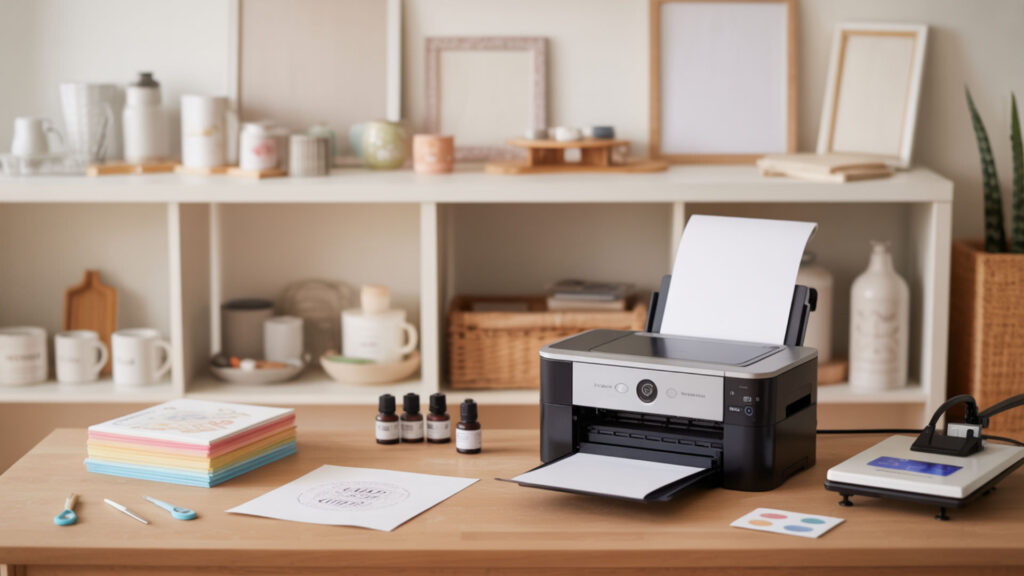
Gather your sublimation ink CMYK, refillable cartridges if needed, and sublimation transfer paper to begin the conversion process. Verify your printer uses piezoelectric technology before purchasing supplies. Print weekly to prevent nozzle clogs and install proper ICC profiles for accurate color output. Your converted inkjet can produce vibrant sublimation transfers for years.
Frequently Asked Questions
Can a used inkjet printer be converted to sublimation?
Yes, but used printers require extensive ink flushing to remove dried OEM ink from nozzles. Success rates drop from 90% with new printers to 60-70% with used units due to printhead clogging risks from accumulated residue.
Can sublimation ink be removed if mistakes are made?
Sublimation ink can be flushed from piezoelectric printers using cleaning solution and multiple cleaning cycles. However, complete removal requires significant ink waste. Most users maintain dedicated sublimation printers rather than switching between ink types.
What kind of paper is required for sublimation printing?
Sublimation requires special sublimation transfer paper with a coating that holds disperse dye ink until heat activates the transfer. Regular office paper absorbs ink permanently and cannot release it during pressing.
Do all inkjet printers support sublimation color profiles?
Only piezoelectric inkjet printers from Epson support sublimation ICC profiles effectively. Thermal inkjet printers cannot use sublimation ink at all, making color profile support irrelevant for HP and Canon models.
How long does a converted printer typically last?
A properly maintained converted inkjet printer can last 3-5 years or longer with regular use. Weekly printing prevents printhead clogging from dried sublimation ink. Piezoelectric printheads outlast thermal heads because they operate without heat-induced wear.
References
- What is inkjet technology. (n.d.). Digital Business Services & Printing Solutions | Ricoh USA. https://www.ricoh-usa.com/en/glossary/inkjet-technology
- How inkjet printers work. (2001, March 26). HowStuffWorks. https://computer.howstuffworks.com/inkjet-printer.htm

